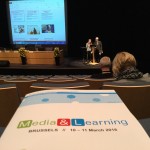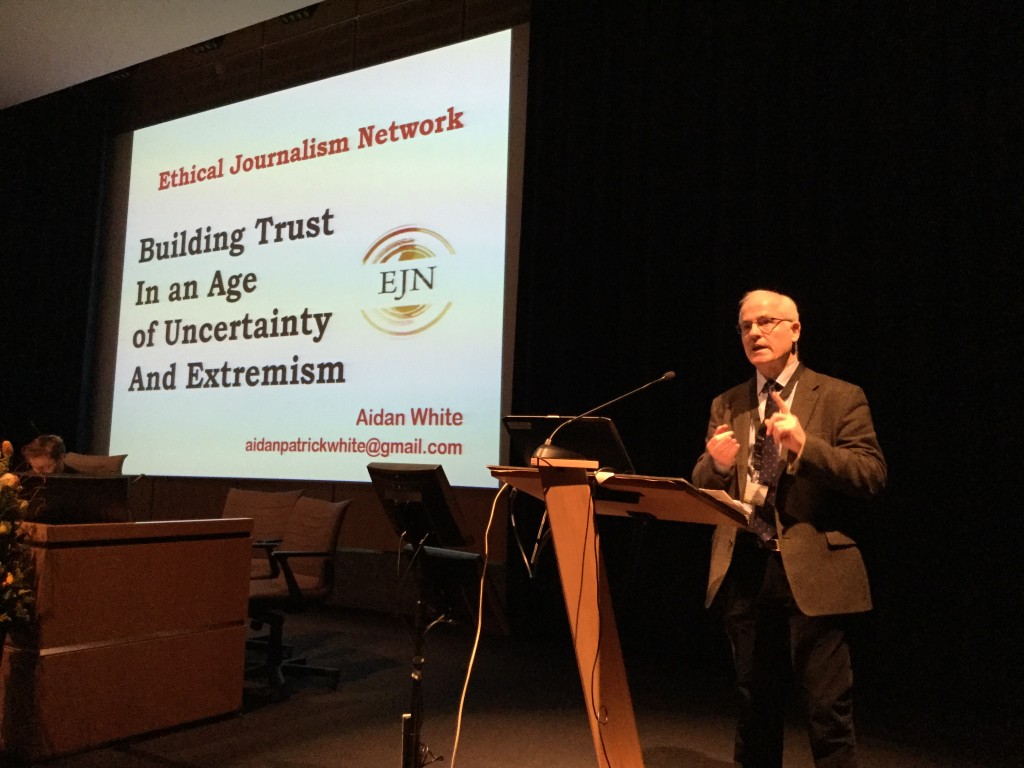Media literacy for a better learning, and to foster tolerance | Post 1

Carlos Fernández-Alameda, Brussels.- We have lived an intense debate in the Media & Learning Congress around three main ideas: how to enrich education with media literacy, how to media education can foster critical thinking and tolerance, and how to tackle radicalisation. The Vice-chancellorship for Research and Technology (UNIR Research, //research.unir.net) have shared also a lot of educational experiences with our worldwide colleagues.
The use of media in the classroom offers a lot of possibilities for teachers and students. “Video may improve their engagement, interest and capability to interact”, Jeff Rubenstein, from Kaltura Media, assures. In his opinion, “media has some special features: add richness, complexity, engaging and immersive environment for our classes”.

Video, education and democracy
Roberto Viola, Director General of DG Connect at the European Commission for Media Literacy, has encouraged teachers to foster a critical use of media between their students: “There is no a simple solution to open society and avoid radicalisation, but we need all the academic staff, and the media professionals to be involved”. For example, “we are helping journalists to verify sources on social media”, Viola has said.

We cannot use media properly if information is not trustful and precise. That is the reason why Aidan White, from the Ethical Journalist Network, has highlighted some of the problems that journalism are facing right now: the lack of resources and funding, the change of business model, the political and ownership pressure. That leads us to a propagandistic approach for journalism, and the great problem “the rush to publish, that steal us the time to critical thinking”. In society, this lack of time to reflect will foster the spread of “hate speech made by politicians like Donald Trump”, White has said.
Margaret Boribon, from the European Newspaper Publisher´s Association (ENPA) has expressed the same concern “Media literacy is a priority because, more than ever, the freedom of the press and the freedom of expression are in danger, because the world is more and more complex, and because everything in the flow information is not reliable”.
Media Literacy in practice
How all these things can be applied to the classroom? UNIR Research (//research.unir.net) have shared our experience in UNIR TV (tv.unir.net) with our colleagues. UNIT TV is a repository of media resources to present knowledge in a more attractive way to students and to analize in depth some specific subjects. UNIR TV shows a 20% of his resources freely, another 20% for registered users, and the 60% only free for UNIR students.
We have heard from Stéphane Hoebeke, from the Belgium public television (RTBF), some of the RTBF practices. His team is trying to enhance the participation of the audience, not only for sharing stories but to coproduce content. For example, “we have videos made by teenagers assuming the role of journalists”.
From ICmedianet, Spain, María Gatón has shown the experiences of some spanish media groups like TVE, Antena 3 and Mediaset. “It is very interesting how they have used historical series, for example, to create a platform to explain the context of the characters and the good number of users engaged in the process”, has underlined.
Jennifer Fleming, from California State University, has studied the use of a scheme for students that allow them to detect what news are reliable and what are not. “We have to give them tools to use critical thinking skills in order to judge the reliability and credibility of news reports, and to appreciate good journalism. For example judging the reliability of sources in the news asking themselves if there are independent and multiple sources cited”.
Finally, Ellen Russman, from the Open University of The Netherlands, has explained the project Viewbrics. The aim of this project is to assess 21st century skills with video in secondary education. “We have created a very interactive tool to make it possible and we are conducting further research following this direction”.
